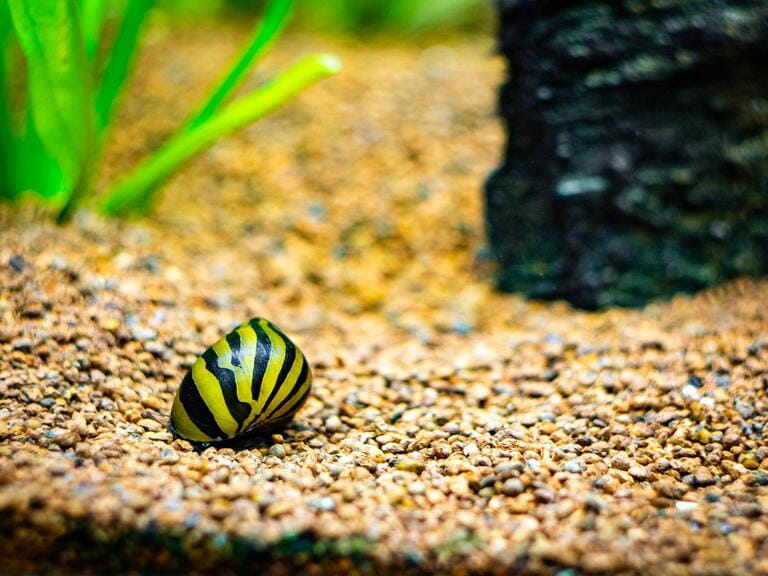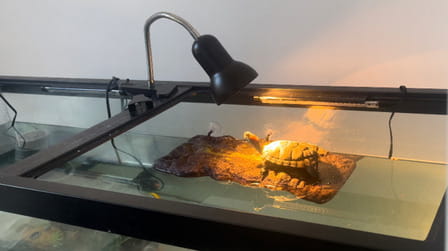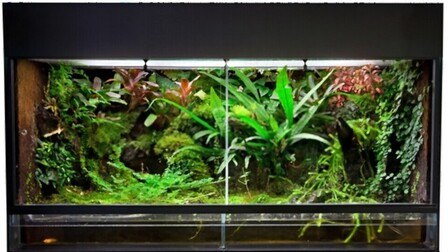Aquarium snails are fascinating creatures that play a crucial role in maintaining the delicate balance of your aquatic ecosystem. These tiny mollusks may seem unassuming, but they are invaluable members of your underwater cleanup crew. From scavenging leftover food to consuming algae, aquarium snails help keep your tank clean and pristine. As your friendly aquarium enthusiast and snail expert, I'm thrilled to introduce you to the diverse world of aquarium snails. Join me as we explore the different types of aquarium snails, their unique characteristics, and how they contribute to a thriving and healthy aquarium environment.
Different Types Of Aquarium Snails
1. Nerite Snails (Neritina spp.)
Nerite snails are highly popular among aquarium enthusiasts for their striking appearance and exceptional algae-eating capabilities. These small and colorful snails come in various patterns, including zebra, tiger, and horned nerite snails. They are fantastic algae eaters, keeping your tank's glass, rocks, and plants free from unsightly green growth.
One of the most significant advantages of nerite snails is that they do not reproduce in freshwater aquariums. Unlike some other snail species, nerites require brackish water for their eggs to hatch. This means that you won't be inundated with a snail population explosion, making them an ideal choice for those who want the benefits of snail cleanup without the risk of overpopulation.

2. Mystery Snails (Pomacea spp.)
Mystery snails, also known as apple snails, are named for their apple-shaped shells. These freshwater snails are a favorite among aquarium keepers for their lively behavior and interesting colors, including gold, blue, and ivory. Mystery snails are primarily detritivores, meaning they feed on decaying plant matter and uneaten fish food, helping to clean up the debris in your tank.
One unique aspect of mystery snails is their ability to breathe both underwater and at the surface. They have a modified gill and a lung-like structure called a "pneumostome" that allows them to come up to the water's surface and take in air. This adaptability makes them excellent inhabitants for aquariums with varying water conditions.

3. Assassin Snails (Clea helena)
If you're dealing with an overpopulation of other snail species in your aquarium, assassin snails might be the solution. As their name suggests, assassin snails are predatory and feed on other snails, helping to control snail populations in your tank. They are particularly effective against nuisance snails like pest snails.
Assassin snails are relatively small and have a beautiful yellow and dark brown striped shell. While they do prey on other snails, they are not aggressive toward fish or shrimp, making them suitable tankmates for most community aquariums.

4. Malaysian Trumpet Snails (Melanoides tuberculata)
Malaysian trumpet snails are unique snails with elongated, cone-shaped shells. They are burrowing snails, often found in the substrate of aquariums. Their constant burrowing helps to aerate the substrate, preventing it from becoming compacted and improving water circulation.
One of the most significant benefits of Malaysian trumpet snails is their efficient detritus-eating capabilities. They consume decaying plant matter, uneaten food, and other organic debris, preventing these materials from breaking down and causing water quality issues. Their burrowing behavior also helps to prevent the formation of anaerobic pockets in the substrate, which can lead to harmful gas buildup.

5. Ramshorn Snails (Planorbella spp.)
Ramshorn snails are named for their flat, spiraled shells that resemble the shape of a ram's horn. They come in various colors, including red, blue, and brown. These snails are primarily detritivores and algae eaters, contributing to the cleanup crew by consuming leftover food and algae in the aquarium.
Ramshorn snails are prolific breeders, so it's essential to keep their population in check if you prefer to have just a few in your tank. However, they are peaceful and not aggressive toward plants, making them a popular choice for planted aquariums.

6. Pond Snails (Lymnaeidae family)
Pond snails are a diverse group of freshwater snails commonly found in aquariums. They are excellent scavengers, consuming algae, leftover food, and organic debris. Pond snails have a conical spiral shell and come in various colors, including brown, black, and striped patterns.
While pond snails are efficient cleaners, their population can quickly grow out of control if left unchecked. To prevent overpopulation, it's crucial to limit the amount of uneaten food in the tank and maintain a healthy balance between snail and fish populations.

7. Trumpet Snails (Cerithiidae family)
Trumpet snails are small, elongated snails with conical shells. They are burrowing snails, often found in the substrate of aquariums. Similar to Malaysian trumpet snails, they help to aerate the substrate and prevent compaction.
One of the unique benefits of trumpet snails is their ability to consume cyanobacteria, also known as "blue-green algae." Cyanobacteria are problematic in aquariums, leading to unsightly blooms that can harm aquatic plants and fish. Trumpet snails' natural consumption of cyanobacteria contributes to a healthier and more balanced aquarium environment.

8. Brotia Pagodula (Brotia spp.)
Brotia pagodula, also known as the "pagoda snail," is a species of freshwater snail with a beautiful, pagoda-shaped shell. They are primarily detritivores, consuming detritus and organic matter in the aquarium. Their unique appearance and peaceful nature make them an attractive addition to aquascapes.
Pagoda snails are relatively small and do not reproduce prolifically like some other snail species. This makes them suitable for maintaining a controlled and balanced snail population in your aquarium.

9. Rabbit Snails (Tylomelania spp.)
Rabbit snails are large, herbivorous snails with conical, spiraled shells. They are native to Southeast Asia and come in various colors and patterns, including orange, black, and spotted. Rabbit snails are primarily algae eaters, helping to keep your tank's surfaces free from algae growth.
These snails are excellent for larger aquariums and can become a focal point due to their eye-catching appearance. Their peaceful nature and relatively slow reproductive rate make them a manageable addition to community tanks.

10. Ivory Snails (Aegista subchinensis)
Ivory snails, also known as "Japanese tramp snails," are attractive snails with creamy white shells. They are native to Asia and are primarily algae eaters, contributing to a cleaner and healthier aquarium environment.
Ivory snails are a peaceful and slow-moving species, making them suitable for community tanks with non-aggressive tankmates. Their beautiful appearance adds an elegant touch to any aquarium setup.

Conclusion
Aquarium snails are not just simple inhabitants of your underwater world; they are invaluable members of your tank's cleanup crew. From consuming algae to scavenging leftover food and detritus, different types of aquarium snails contribute to the maintenance and well-being of your aquatic ecosystem. Each species brings its unique benefits and characteristics, making it essential to choose snails that suit your aquarium's specific needs and conditions.
By introducing a diverse community of snails, you can create a balanced and self-sustaining ecosystem that thrives with minimal intervention. Whether you opt for algae-eating nerite snails, efficient detritivores like Malaysian trumpet snails, or striking mystery snails to add a pop of color, aquarium snails are sure to captivate and impress. Embrace the beauty and functionality of these remarkable creatures, and let them take care of the dirty work in your underwater paradise. Happy snail keeping!









